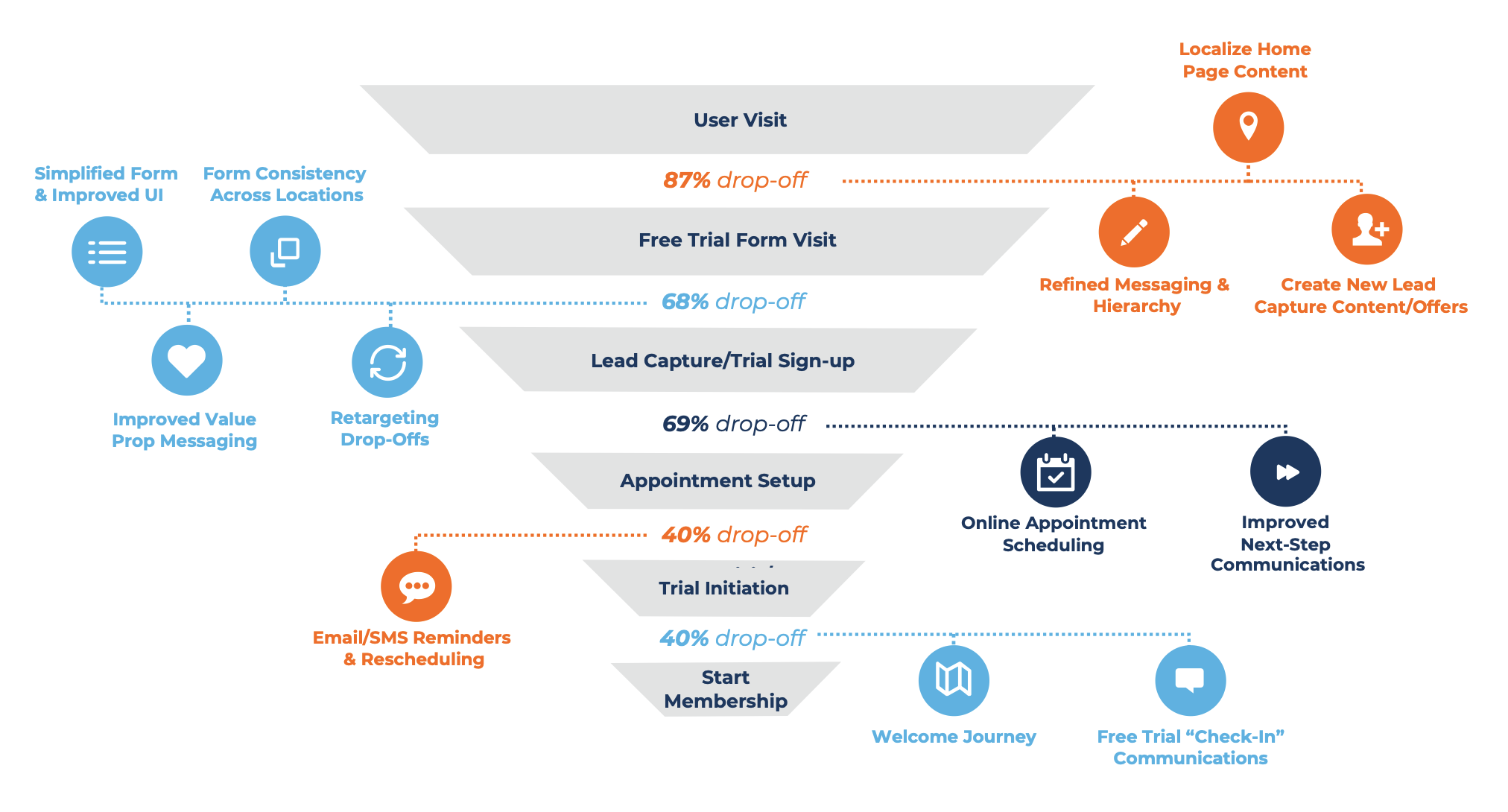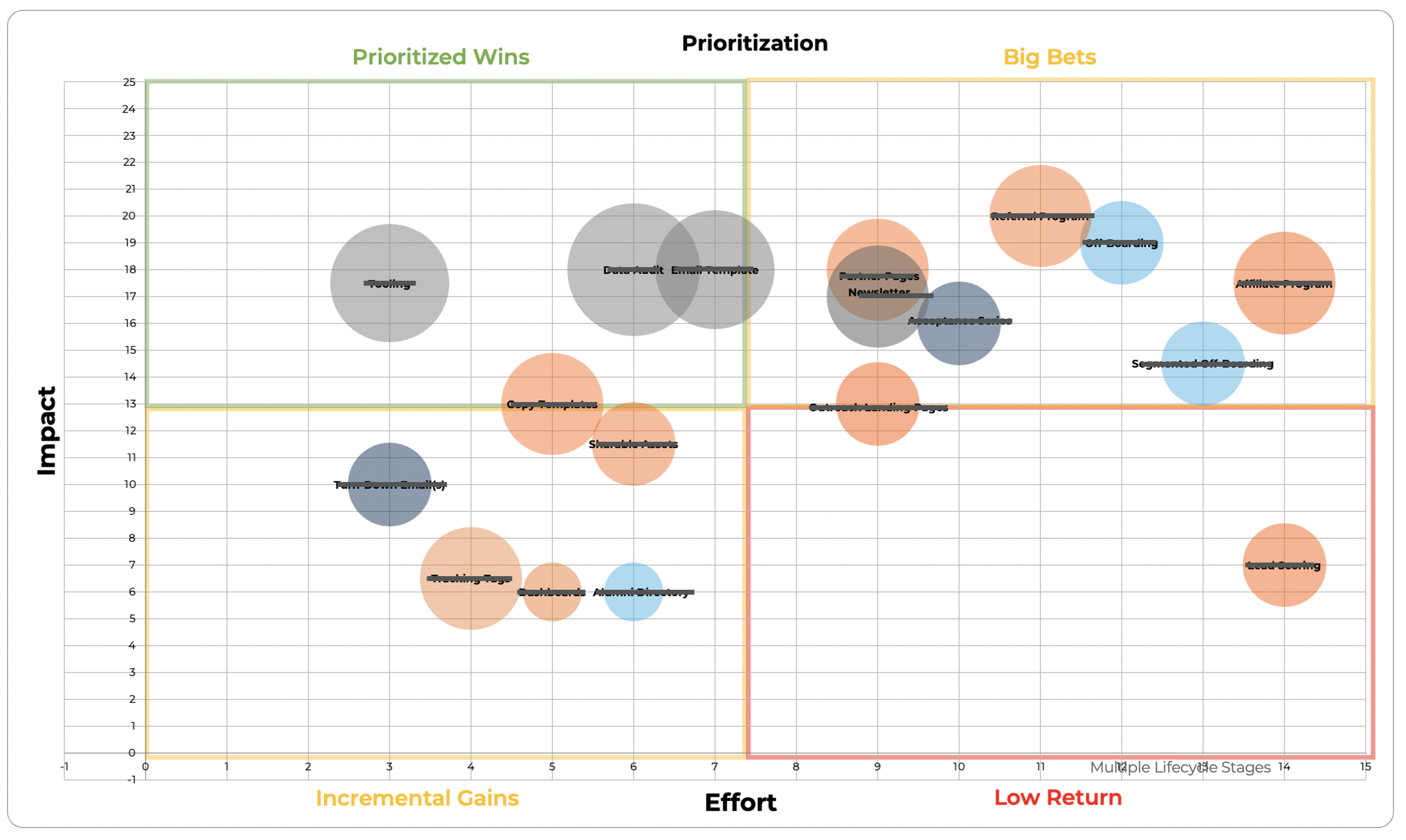Consumer preferences and expectations are changing at a record pace. The rapid adoption of digital products, tools and experiences have played a central role in this pace of change, and businesses have been sprinting to keep up. Innovative digital experiences that were once differentiators for brands have become a ‘must-have’ to even be in the consumer consideration set.
In addition to consumer preferences shifting, the technology companies that serve as the foundation of the digital world continue to evolve their products and offerings, forcing brands to quickly pivot how they attract and engage customers. This includes visible experiential changes such as Apple introducing new UI patterns into iOS, or updates ‘below the surface’ such as Google changing their search algorithm. It’s more critical than ever for brands to keep a pulse on the experiences they offer. But with such rapid innovation happening, how can brands ensure that their digital experience is up-to-par? A digital experience audit can provide the insights and opportunities critical to staying competitive in an increasingly dynamic marketplace.
What is a Digital Experience Audit?
A digital experience audit is a powerful methodology that can inform or answer a wide variety of complex questions about the effectiveness of your digital ecosystem. By evaluating quantitative and qualitative criteria within the context of external influences, an audit can yield actionable recommendations on how to better serve your customers. For example, you might be asking yourself:
- Do I need a new website?
- Is my website serving my target audience?
- Is my app providing the features that users expect?
- How can I make my complex digital presence simpler?
- What will make my website rank higher on Google?
These are complex questions that typically can’t be answered with a simple “yes or no”. A digital experience audit can provide the rich insights and actionable recommendations that help brands make informed decisions and keep pace with consumer expectations.
Performing a Digital Experience Audit
Step 1: Establish Goals and Objectives
Before beginning an experience audit, it’s crucial to define the objectives and the reason behind it. After all, there’s typically an underlying reason for the audit in the first place—so what is it? For example:
- Are visitors not converting as expected?
- Is there a perception that the design is outdated?
- Does the site or app have too much content, making things difficult to manage?
Once we’ve narrowed in on the ‘why,’ it allows us to focus on a tailored approach, develop a list of criteria for the audit and keep the assessment focused on the core objectives of the business.
Step 2: Qualitative Review
The first lens through which we evaluate an experience is a qualitative one. The qualitative review involves assessing the quality of an experience or content based on best practices and audience inputs. Depending on the questions we’re answering, various subject matter experts are engaged to provide critical inputs. Typical aspects of the qualitative assessment include:
- Competitor reviews: How are competitors solving for or addressing a particular problem? How is the existing experience stacking up to competitors? Are there any notable gaps?
- Content quality: Are there issues with the existing content? Is there consistent voice and tone? Are you effectively speaking to your target audience?
- Customer experience: Does the experience have a consistent UI? Is the information architecture intuitive? Is anything missing?
A variety of tools such as site crawlers, heatmaps, and user flow diagrams are utilized to perform our holistic qualitative assessments.

Example: Stakeholder Insights
Step 3: Quantitative Review
The next area of focus is a quantitative review. This step in the process is all about the data—gathering insights on how websites, apps, content, experiences, or specific campaigns are performing. Typically, this effort involves:
- Technical and on-page search engine optimization (SEO) audit: How effective are current SEO efforts? What opportunities exist to improve rank and visibility?
- Performance analysis based on KPIs: How is the experience delivering against business objectives? What quantifiable factors are hindering performance?
- Content optimization recommendations: Do you have underperforming content? What should you keep, consolidate or archive?
- Funnel or journey analysis: Where in the journey are users disengaging? What are the areas of greatest drop-off within the funnel?

Example: Funnel Analysis and Recommendations
To answer all these questions, we leverage tools and data sources such as Google Analytics, Google Search Console, SEMrush, Adobe Analytics among others.
Step 4: Contextual Inputs
An important step in the process involves layering on the contextual inputs. It’s easy to get lost in data points and best practices, but it’s important to take a step back and really consider what else is going on in the market, the category, or the world. A great example of a contextual input is COVID-19. Regardless of industry, the pandemic made a significant impact on how consumers engage, and businesses compete. Over the past few years, every recommendation made has had to take into consideration the impact of COVID. As we think more broadly about external inputs, we take into consideration:
- Relevant research: research that has been compiled on customers, prospects, competitors or the broader market
- Stakeholder interviews: in-depth discussions with key decision makers or influencers within the organization
- Industry and cultural trends: shifts happening in the industry or the outside world that influence how users consume information and engage with brands
- Audience surveys or product reviews: perspectives and perceptions from the existing user base
To gather these inputs, we perform research using a variety of sources, interview stakeholders when possible, and use the right tools to survey customers.
Step 5: Prioritizing Strategic Recommendations
After assessing the holistic experience, including qualitative, quantitative, and contextual inputs, it’s time to distill the findings into clear, actionable insights that answer the key questions that drove the audit. By using prioritization frameworks that take into account effort, dependencies, potential business impact, and levels of confidence, the opportunities revealed through the audit can be organized and roadmapped to deliver the greatest value to the business as quickly as possible.

Example: Impact vs. Effort Framework
The Takeaway
Experience audits are one of the most valuable foundational initiatives that your brand can undertake to drive improved performance of your digital presence. An audit arms your business with deep insights that can inform real, tangible opportunities to drive incremental improvements and/or fundamental transformations in how you connect with your customers online. While there are many ways to approach an experience audit, brands that leverage a thoughtful, strategic methodology will come away with the most impactful outcome.


